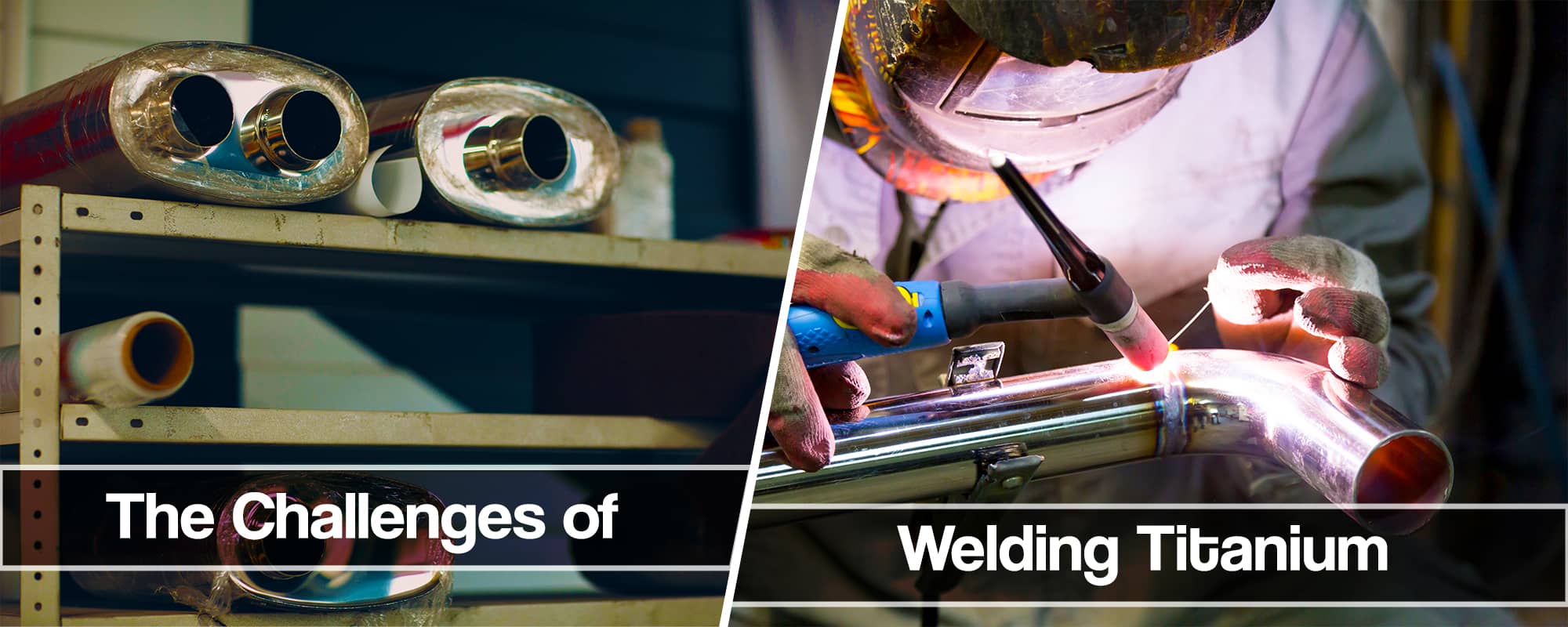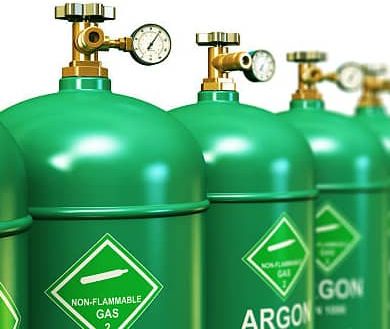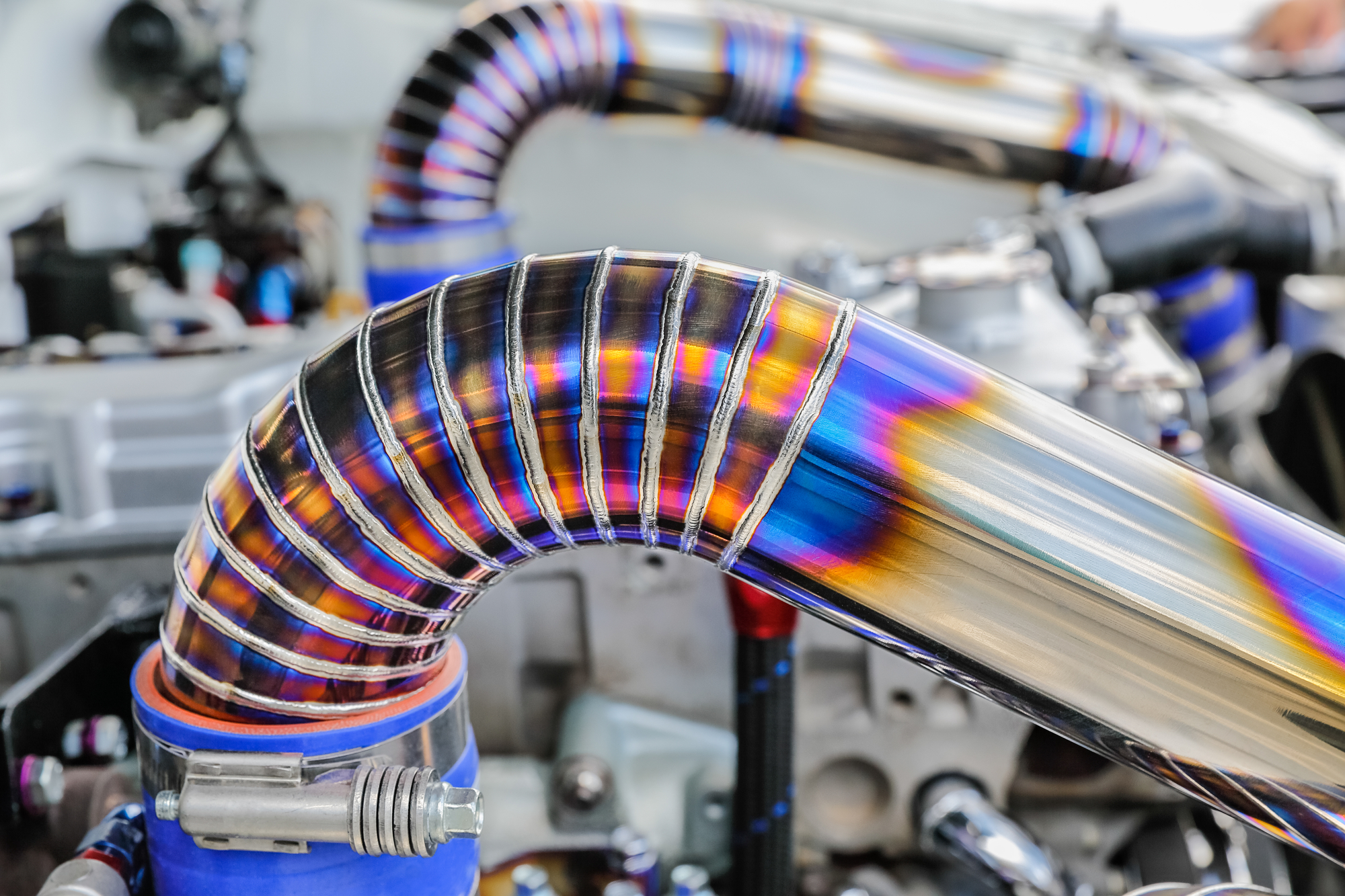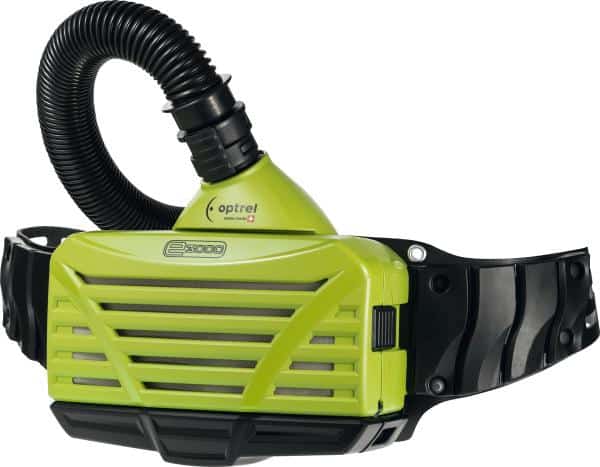We all know how strong and solid but light titanium can actually be. It is known for its strength and corrosion resistance and mentioning its very name echoes its reputation.
However, improper titanium welding can render it useless.

If a welder happens to introduce some oxygen or other contaminants to the weld zone, you can go ahead and throw that puppy away as it won’t do you any good. To avoid that and keeping your nerves in check, we have prepared an article that will help you with everything that you need to know about welding titanium properly.
Titanium – Strong, Light, and Durable
You might say that aluminum welding is the most common welding process when it comes to non-ferrous metals. However, welding titanium is the most impressive process of them all. Titanium is known for providing the highest strength-to-weight ratio among all metals used in manufacturing today. It is lighter than ferrous steel, yet it is able to display a lot higher strength.
The only downside to it is that it is more expensive. But the price on titanium is more than justified as opposed to what you get with it. It is corrosion-resistant, enables longer service life, and requires less maintenance, and generally lowers your costs.
The Challenges of Welding Titanium
Welding titanium is often compared to welding steel. Some welders who have experience welding various types of steel think that they are skilled and experienced enough to easily figure out how to work on titanium. But this is not completely the case.
The biggest challenge when welding titanium lies in oxygen embrittlement. When the material is heat affected it can be exposed to oxygen and eventually result in a corrupt weld
This can lead to it becoming brittle and prone to cracking. It can cause it to fracture prematurely, something that should not happen with titanium. This is why titanium welders have to be skilled enough so they prevent oxygen from infiltrating the weld.
One of the ways to do this is with an inert gas, argon in most cases, but helium works as a shield as well. The liquid weld pool is not the only thing that needs shielding as surrounding material also needs protection. This is the challenging part and something that even skilled welders can find hard to do.
Handling and Preparing Titanium For Welding
The main rule when welding titanium is to keep your hands to yourself. Basically, no touching the material with your bare hands.
Cleanliness is not the only but definitely the biggest rule for success when creating a proper titanium weld.
Grease and grime can contaminate titanium welds, but body oils, as well as other types of oils, can also be detrimental to creating a proper weld.
The best practice includes wearing some nitrile gloves or any lint-free kind of gloves when preparing. Your workstation should also be clean and secure from any cross-contamination. Be sure to remove any dust left from aluminum, common alloys, or stainless steel.
Surface Cleaning Procedure
Welders need to understand how to prepare an ideal foundation and prevent some of the most common types of mistakes that inexperienced welders do. These would be:
- Using the incorrect filler metal.
- The surface of the material is not clean enough.
- Lack of quality weld puddle shielding.
These are the main things every welder should have in mind. Particularly when working on Grade 5 titanium. They should know more about combining mechanical properties, weldability, formability, and corrosion resistance.
Shielding Gas Selection in Titanium Welding
Choosing a proper shielding gas will result in a good titanium weld. Titanium is a reactive metal when exposed to oxygen at a certain threshold (somewhere between 500F to 800F). For titanium tube and pipe welding, the best shielding gas to use is 100% argon both as a shielding gas and a backing gas. You might even need purity up to 99.999% depending on the application.
A welder should be very careful with the weld procedure as that way the purity levels may be dictated as well as the dew point of the argon. In some cases, weld procedures may accept a 75%/25% or a 70%/30% argon helium mix, but not always.

Helium works well as a backing gas as it offers the same protection as argon. Be sure to maintain proper gas flow as well.
Equipment Selection and Welding Tips
To weld titanium, it is recommended that you use a Direct Current Electrode Negative (DCEN) setting. One should also use a transformer- or inverter-based welding power source with DC.
Unless you regularly weld other types of alloys, you won’t need AC. Titanium is welded with TIG welding machines and exclusively by the certified welders that have a long TIG welding experience.
We have a few useful tips for you here:
- Using High-Frequency start is critical because the tungsten should never touch the base metal.
- A welder with low amperage is more than enough, with a power source ranging from 3 to 200 amps.
- Having a TIG welding machine with pulsing capabilities helps in reducing heat input. It can also improve arc stability and penetration. The advantage is given to inverters with higher pulsing frequencies.
Recommended Consumables For Titanium Welding
AWD recommends using D10.6 thoriated and lanthanated tungsten electrodes and so do we. But a case can be made for 2% ceriated ones as well. Preferable tungsten sizes are 1/16-inch or small for <90 amps, 1/8-inch for welding above 200 amps, and 3/32-inch for 90-200 amps.
Titanium Welding and Finishing Processes
The finishing process is equally important for a titanium weld as preparation. A protective argon flow is needed until it cools down below 500F. You can determine based on the color of the weld if it is acceptable or not.
Colors ranging from silver to straw to brown mean that everything is good. Blues, greens, grays, and finally white are not good indicators. If you notice any discoloration, you should go back and check every step of your welding process to determine where contamination has occurred.

If contamination has happened, you need to start all over again as there is no way of fixing contamination of a titanium weld.
Dangers of Titanium Welding
After doing any grinding operations, be sure to contain any titanium dust that is left. Never allow any dust to accumulate as dust and flakes are used to make fireworks. The sparkling effect and pyrotechnics are a direct reaction to burning titanium.
Gas Tungsten Arc Welding (TIG welding) and not gas metal arc welding (MIG welding) is better to use as you can easily adjust the temperature of the weld puddle. That way, you can also ensure that there is enough metal that will prevent undercuts. You can also add a filler metal that is not the same as the base metal or the metal used with TIG welding.

Adding metal separately from the electrode maintains the weld pool and gives you more options and control.
Conclusion
Titanium is a hard and very useful substance. But treating it improperly will cause you to ruin your project. There is no going back if you mess things up, only starting everything again from scratch. You have to be wary of the temperature, the shielding gas, and most importantly keeping everything clean.





